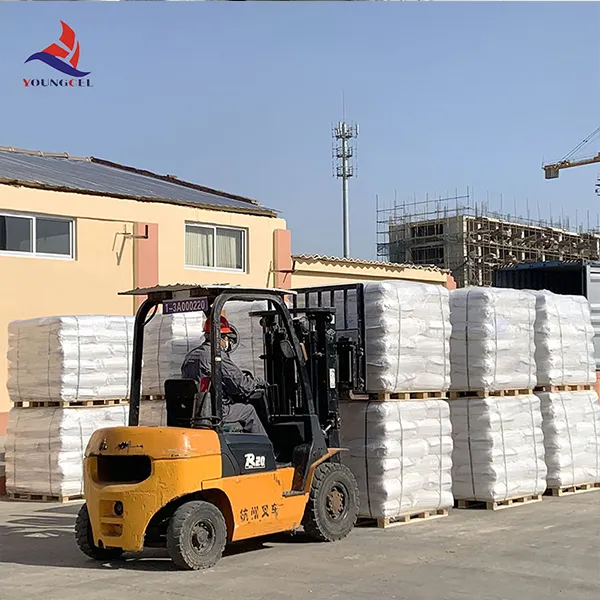Cellulose for Cement Enhancing Properties and Sustainability
In recent years, the construction industry has seen a transformative shift towards more sustainable practices, with researchers and professionals continually seeking innovative materials that enhance the properties of traditional building materials. Among these advancements, cellulose has emerged as a promising additive to cement, offering improved performance and environmental benefits.
Cellulose, a natural polymer derived from plant cell walls, is the most abundant organic polymer on Earth. Its unique properties, such as excellent tensile strength, biocompatibility, and biodegradability, make it an attractive candidate for various applications. When incorporated into cement, cellulose can significantly enhance the material's performance by improving its workability, durability, and overall structural integrity.
Cellulose for Cement Enhancing Properties and Sustainability
Additionally, cellulose can improve the water retention of cement mixes. Enhanced water retention leads to better hydration of the cement particles, which is crucial for developing long-term strength and durability. The presence of cellulose ensures that the cement maintains optimal moisture levels during the curing process, thereby reducing the risk of cracks and surface defects that often arise from premature drying. This characteristic makes cellulose-modified cement products particularly suitable for regions with variable or harsh weather conditions, where moisture control is vital.
'cellulose for cement'

Moreover, cellulose's addition to cement can enhance its resistance to microbial growth. In environments where moisture is prevalent, microbial activity such as the growth of mold or bacteria can degrade the structural integrity of a building. Cellulose acts as a natural barrier against such microbial infestations, ensuring the longevity and safety of the construction. This property is increasingly important as the construction industry moves toward creating healthier indoor environments for occupants.
From an environmental perspective, the incorporation of cellulose into cement formulations aligns with ongoing efforts to reduce the carbon footprint of concrete production. Traditional cement manufacturing is responsible for approximately 8% of global carbon dioxide emissions, primarily due to the calcination of limestone and the energy-intensive processes involved. By utilizing cellulose, which is a renewable resource, the construction industry can reduce its reliance on non-renewable materials and lower greenhouse gas emissions. Furthermore, cellulose can be sourced from agricultural waste products, contributing to a circular economy by transforming waste into valuable construction materials.
In practical applications, the use of cellulose in cement is already being explored in various types of construction. For example, cellulose-reinforced cement composites have been used in precast concrete elements, providing better crack resistance and flexibility while maintaining strength. Additionally, there is ongoing research into developing cellulose-based bio-cements, which could facilitate the construction of structures that can breathe and maintain moisture balance within the walls.
In conclusion, incorporating cellulose into cement presents an exciting opportunity for the construction industry to enhance the performance of building materials while prioritizing sustainability. The benefits of improved workability, increased water retention, enhanced durability, and reduced environmental impact make cellulose an ideal candidate for future innovations in cement and concrete technology. As the industry continues to embrace environmentally friendly solutions, cellulose may play a pivotal role in shaping the future of sustainable construction practices. The potential for cellulose to bridge the gap between traditional building materials and modern sustainability goals is vast, making it an essential focus for continued research and development.
-
Rdp Powder: Key Considerations for Wholesalers in the Building Materials IndustryNewsJul.08,2025
-
Key Considerations for Wholesalers: Navigating the World of Hpmc - Based ProductsNewsJul.08,2025
-
Hpmc Detergent: Key Considerations for WholesalersNewsJul.08,2025
-
Key Considerations for Wholesalers: China Hpmc For Tile Adhesive, Coating Additives, Concrete Additives, and MoreNewsJul.08,2025
-
Crucial Considerations for Wholesalers: Navigating the World of Construction MaterialsNewsJul.08,2025
-
Key Considerations for Wholesalers Sourcing Additive For Cement, Additive For Concrete, Additive For Putty from Additive Manufacturer Shijiazhuang Gaocheng District Yongfeng Cellulose Co., Ltd.NewsJul.08,2025




